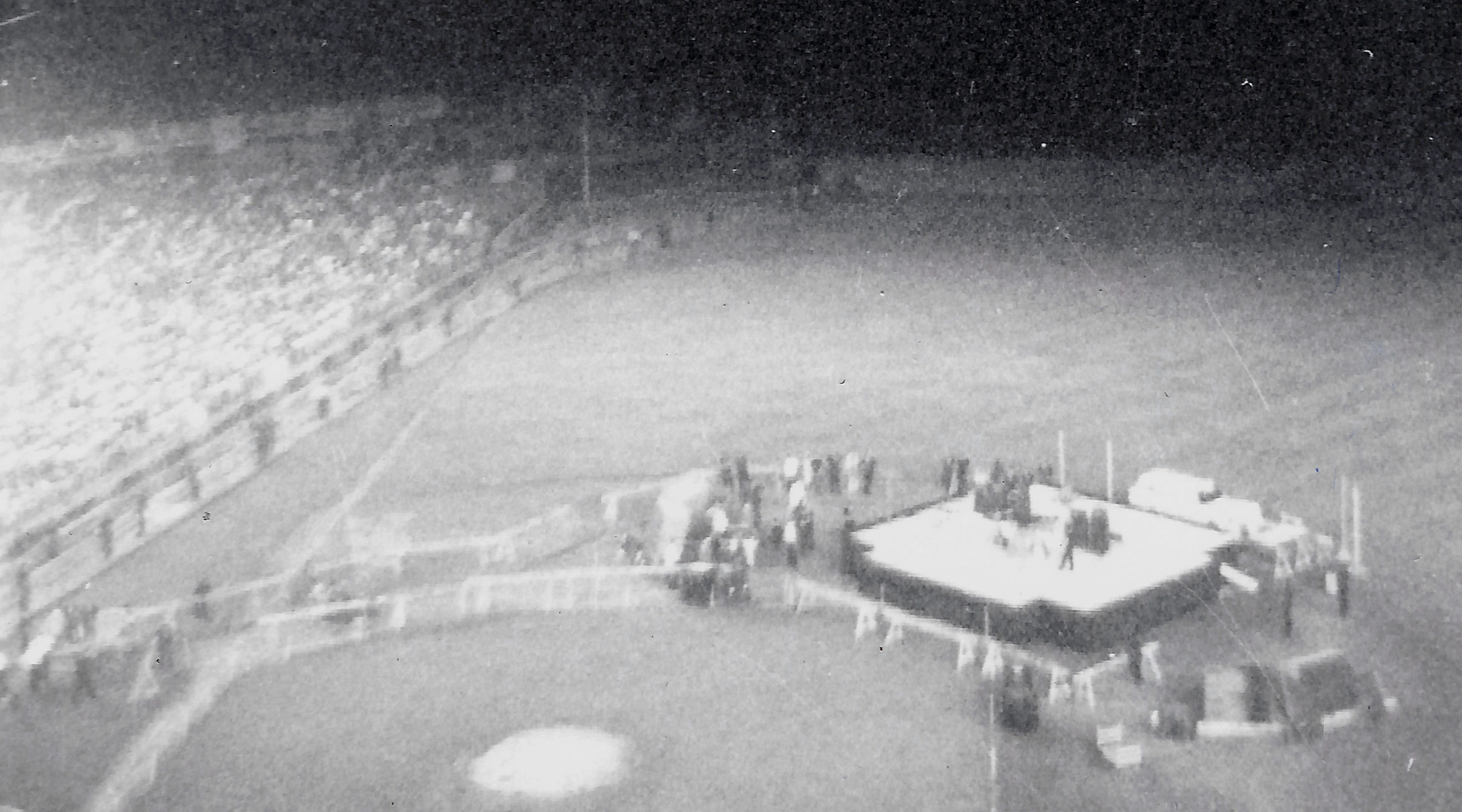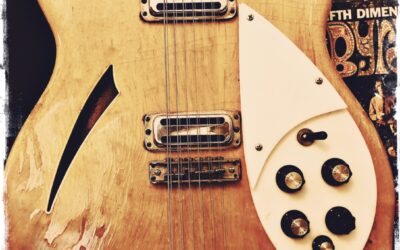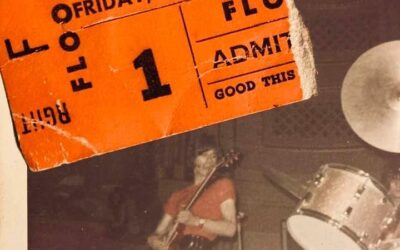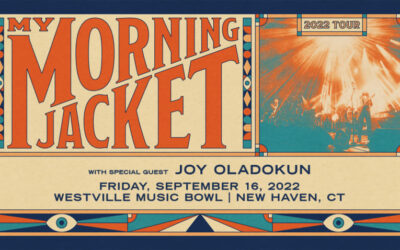I was into the guitar, partly because my older brother had one. I used to try and play his. My father saw my interest, and whenever he saw someone playing a guitar on the television, he would call me into the living room to watch. On January 3rd, 1964, he called me to see The Beatles on The Jack Paar Show. That was the beginning of a musical obsession that would reshape my life and is with me still.
On February 9th, The Beatles made their live television debut on The Ed Sullivan Show. In that short span of time, their music had conquered America, and every waking moment of my life. My cousin Bette and I would scan the radio stations listening to their songs as many times as we could find a station playing one spinning the dial wildly looking for another sonic fix. We could barely contain ourselves waiting for a show featuring the Beatles to air, and, of course, the discussions would carry on well afterward. All we could think about was their next appearance scheduled for the following week, to be broadcast from Miami Beach on February 16th.
Next up was the news that there was going to be a movie, A Hard Day’s Night. Bette and I were off-the-charts crazy to see it as soon as we could. The movie came out in the US in August. We were lucky to see it in an old-fashioned movie house, the Rivoli Theatre in West Haven, Connecticut. The experience was surreal, actually getting to see them on the big screen for over an hour, talking, joking, and playing music.
The balance of 1964 into 1965 was filled with the release of Beatles LPs and 45s. August of 1965 would find Bette and me back at the Rivoli seeing Help!, the Beatles’ second movie. This one was in color, unlike the black and white Hard Day’s Night. They were already bigger than life; full color just made the experience more real.
I bought my first 12-string Rickenbacker sometime in 1965. Playing guitar by this point had become one of the only things I truly cared about. Since George Harrison, John Lennon and Roger McGuinn of The Byrds played Rickenbacker guitars, I simply had to have one. They were not cheap, and to raise the money, I started working odd jobs, helping neighbors, delivering newspapers, selling my bike and most of my toys. It was worth it.
One day in the summer of 1966, after spending some quality time playing guitar in the barn behind our house, my mom and dad said they had something they wanted to tell me. We were going to Shea Stadium on August 23rd to see The Beatles.

(The author’s photo of the Beatles, taken from the back of Shea Stadium in 1964)
The journey down to New York included listening to the Beatles on the radio and singing along with the songs. The stadium seats were quite high up, and I will admit that the sound system was not great, but we could hear the band despite the screams around us. Fortunately, my father brought binoculars and a camera.
I remember the setlist (at least some of it):
- Rock and Roll Music (Chuck Berry cover)
- She’s a Woman
- If I Needed Someone
- Day Tripper
- Baby’s in Black
- I Feel Fine
- Yesterday
- I Wanna Be Your Man
- Nowhere Man
- Paperback Writer
- Long Tall Sally (Robert “Bumps” Blackwell, Enotris Johnson and Richard Penniman, better known as “Little Richard”)
Little did we know that the August 29th show at Candlestick Park would not only be the last concert of that tour, it would also be their last tour.
Between 1964 (the year of the first appearance on The Ed Sullivan Show) and 1966, (the year of The Beatles’ last concert) they released an incredible number of albums in the United States. 1964 saw the release of Meet the Beatles!, The Beatles Second Album, A Hard Day’s Night, Something New, and Beatles ’65. In 1965 they released Beatles Vl, Help!, and Rubber Soul. The Rubber Soul LP saw the band starting to take a major step beyond traditional rock & roll music. This continued with their next two albums released in 1966, Yesterday and Today, and the groundbreaking Revolver.
Also, in 1966, The Beatles came up with a creative alternative to performing live. They would make videos that they distributed to TV stations. Years before MTV, The Beatles laid the groundwork for what would become a major networking tool.
We started hearing that the next Beatles LP would be one of epic scope. To this day, 1967’s Sgt. Pepper’s Lonely Hearts Club Band is considered one of the greatest rock & roll LPs ever made. 1967 also saw the release of the trippy Beatles film Magical Mystery Tour and its soundtrack.
The world was changing at breakneck speed both culturally, politically, and musically. Much of the expansion of popular music can be directly tied to The Beatles and Bob Dylan, each inspiring the other.
It was no surprise that 1968 would see yet another shift of musical direction from the Beatles. The Beatles (or The White Album as it’s commonly known) was released as a double LP. I have always felt that every great double LP would have made a fantastic single LP. In the case of The Beatles, I will admit there are songs I could have lived without back in 1968. But listening now, there were way too many great songs to fit on a single record, so why not take some chances with the left-over grooves!
1969 saw the release of Abbey Road featuring the classic John Lennon song “Come Together,” and the beautiful George Harrison songs “Something” and “Here Comes the Sun.” Side two included a collection of song fragments tied together that end with the lyrics, “and in the end, the love you make is equal to the love you take”. This line would soon take on greater meaning. John Lennon had privately left the band six days before the LP’s release, and by the following April, Paul publicly announced the band’s breakup. One of my favorite Beatles songs, “The Ballad of John and Yoko,” was produced at the end of these sessions and released later as a 45. It was recorded as a duo with just Paul playing bass and drums, and John on acoustic and electric guitars. Despite the tension in the band, John and Paul were still able to pull it together in the studio.
1970 brought the long-awaited release of the final Beatles LP, Let It Be. Well ahead of its release bootlegs were leaked and we could hear firsthand the tension and dysfunction within the band, though there were still some amazing songs waiting to see the light of day. I went to see the Let It Be movie at the theater in Madison, Connecticut, with my friend Bill Thompson. By that time, he and I had a band and had been playing songs from the Let It Be bootlegs. Together we watched the final movie The Beatles would release as a band.
1970 would also bring the release of solo albums from each of The Beatles. My personal favorite is John Lennon’s Plastic Ono Band. John made it clear there would be no more new Beatles music. In his song “God,” John lists the many things he no longer believes in, leading up to these lyrics, “I don’t believe in Beatles… and so dear friends you’ll just have to carry on, the dream is over.”
There has never been a day in my life since 1964 that the music of The Beatles and their many solo efforts have not been playing as a soundtrack to my life. The music of the four Beatles, both as a band and solo, has offered me a worldview and a lifelong endeavor that has led to a life well-lived, “Yeah Yeah Yeah, Yeah!….”



0 Comments